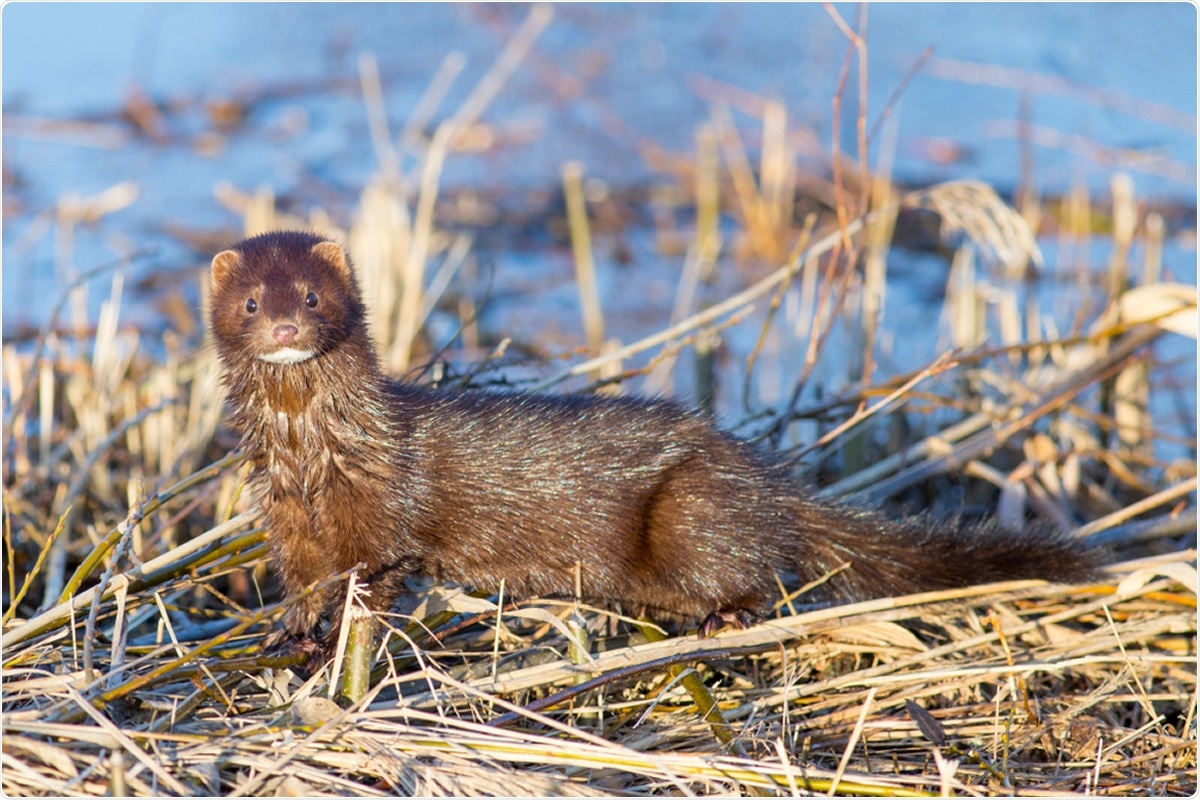Zoonotic diseases have caused outbreaks and epidemics throughout history. The current coronavirus disease (COVID-19) pandemic is one of the worst pandemics in the world.
The coronavirus pandemic, caused by the severe acute respiratory syndrome coronavirus 2 (SARS-CoV-2), first emerged in Wuhan City, China. The outbreak was reported in a seafood market, where wildlife trade occurs. One of the virus's potential intermediate hosts is the pangolin, which may have acquired the virus from bats.
Apart from pangolins, camels, and civet cats, another possible host of the virus are minks.
Researchers at the U.S. Centers for Disease Control and Prevention (CDC) report outbreaks of coronavirus disease (COVID-19) on mink farms in Utah, United States. They surveyed around farms for evidence of exposure and found high SARS-CoV-2 titers, suggesting a possible viral transmission pathway to native wildlife.

Wildlife epidemiologic investigation
The researchers reported a wildlife epidemiologic investigation of mammals captured on or near properties in Utah, where outbreaks of SAR-CoV-2 were assumed to occur in farmed mink.
Mink farming is a popular and common industry in the U.S. Most of the farms are family-owned. Amid the coronavirus pandemic, the U.S. Department of Agriculture's Veterinary Services Laboratories confirmed SARS-CoV-2 infection in mink at two Utah farms in August 2020.
From there, more outbreaks were confirmed at many farms not only in Utah but also in Wisconsin, Michigan, and Oregon. Although epidemiologic investigations are being processed, scientists believe that infected farmworkers are the potential source of the virus.
The study
To arrive at the study, published in the CDC's Emerging Infectious Diseases journal, the team captured free-roaming mammals from August 22 to 30, 2020. They used Tomahawk and Sherman traps placed outside barns and barrier fences.
The team obtained oral, nasal, rectal swabs, blood samples, and tissue specimens from the animals. All the samples collected were sent to the National Veterinary Services Laboratories, while tissue specimens were sent to the U.S. Geological Survey National Wildlife Health Center for testing.
SARS-CoV-2 viral RNA was tested in the samples by real-time reverse transcription-polymerase chain reaction (RRT-PCR). Virus neutralization assays were used to test serum samples.
Overall, the team captured 102 mammals, 78 are rodents and 24 are mesocarnivores. Rodent species composed of 45 deer mice, 5 Peromyscus spp. Mice, 25 house mice, and 3 rock squirrels. Mesocarnivore species consisted of presumed escaped American mink, 2 presumed wild American mink, 5 raccoons, and 6 striped skunks.
Of the minks captured, 11 tested positive for SARS-CoV-2 antibodies. No other animals had detectable antibody responses. This means that the minks were previously exposed to SARS-CoV-2 and got infected.
Of those minks with a positive result, three had a high cycle threshold detection.
"Although we did not find evidence for SARS-CoV-2 establishment in wildlife, the discovery of escaped mink with the opportunity to disperse and interact with susceptible wildlife, such as wild mink or deer mice, is concerning," the researchers explained in the study.
Escaping minks into the wildlife may pose a threat to wild minks. Since they are susceptible to SARS-CoV-2 infection, they can be potential reservoirs of the virus. This could lead to future outbreaks of COVID-19, which has now infected over 28.6 million cases in the U.S. alone, with more than 513,000 deaths.
"Heightened biosecurity and best management practices would help prevent accidental releases of infected animals or spillover of SARS-CoV-2 from susceptible species to native wildlife," the researchers added.
Reverse zoonosis could also play a role in the spread of viruses. It involves the transmission of a virus from humans to animals. Since the spread could pose health threats to both humans and animals, wildlife and farm surveillance of minks is crucial.
- COVID-19 Dashboard by the Center for Systems Science and Engineering (CSSE) at Johns Hopkins University (JHU) – https://gisanddata.maps.arcgis.com/apps/opsdashboard/index.html#/bda7594740fd40299423467b48e9ecf6
- Shriner, S., Ellis, J., Root, J. et al. (2021). SARS-CoV-2 Exposure in Escaped Mink, Utah, USA. Emerging Infectious Diseases. https://wwwnc.cdc.gov/eid/article/27/3/20-4444_article
Posted in: Medical Science News | Medical Research News | Disease/Infection News
Tags: Agriculture, Antibodies, Antibody, Biosecurity, Blood, Coronavirus, Coronavirus Disease COVID-19, Infectious Diseases, Pandemic, Polymerase, Polymerase Chain Reaction, Research, Respiratory, RNA, SARS, SARS-CoV-2, Severe Acute Respiratory, Severe Acute Respiratory Syndrome, Syndrome, Transcription, Veterinary, Virus, Zoonosis

Written by
Angela Betsaida B. Laguipo
Angela is a nurse by profession and a writer by heart. She graduated with honors (Cum Laude) for her Bachelor of Nursing degree at the University of Baguio, Philippines. She is currently completing her Master's Degree where she specialized in Maternal and Child Nursing and worked as a clinical instructor and educator in the School of Nursing at the University of Baguio.
Source: Read Full Article


